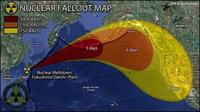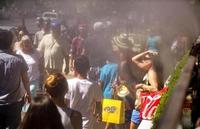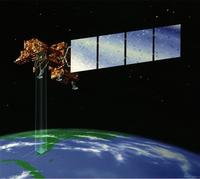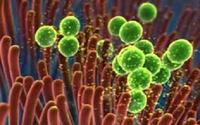-
Fukushima radioactive plume to reach U.S. next year

The radioactive ocean plume from the 2011 Fukushima nuclear plant disaster will reach the shores of the United States within three years from the date of the incident, but is likely to be harmless, according to a new study. While atmospheric radiation was detected on the U.S. west coast within days of the incident, the radioactive particles in the ocean plume take considerably longer to travel the same distance.
-
-
Aquifer supplying a third of U.S. irrigated groundwater depleting quickly: study
The High Plains Aquifer of Kansas — also called the Ogallala Aquifer — supplies 30 percent of the U.S. irrigated groundwater. New study finds that if current irrigation trends continue, 69 percent of the groundwater stored in the High Plains Aquifer will be depleted in fifty years.
-
-
Nanoparticles in food pose health risks
Nanomaterials are increasingly used in water treatment, food packaging, pesticides, cosmetics, and other areas. There is a growing concern that these particles could pose a potential health risk to humans and the environment. In a new study, researchers have developed a reliable method for detecting silver nanoparticles in foods.
-
-
New understanding of key step in anthrax infection
Scientists advance A new hypothesis concerning a crucial step in the anthrax infection process. The research teams have explored the behavior of the toxins that rapidly overwhelm the body as the often-fatal disease progresses. Their findings suggest a new possible mechanism by which anthrax bacteria deliver the protein molecules that poison victims. Anthrax is easily weaponized; the findings could help lead to a more effective cure.
-
-
Irradiated mosquitoes provide malaria vaccine
A new malaria vaccine is derived from mosquitoes that have been irradiated but not killed. The radiation critically weakens the malaria parasite, Plasmodium falciparum, which is extracted from the insects’ salivary glands and administered intravenously to subjects.
-
-
Rapid response, imaging of injuries aided Boston Marathon bombing victims
According to the Centers for Disease Control and Prevention (CDC), bombing survivors have the highest incidence of injury to soft tissue and musculoskeletal systems with the most extreme injury being traumatic amputation, which is reported in up to 3 percent of cases. The Boston Marathon bombings resulted in three fatalities and 264 casualties, with the most severe injuries involving lower extremities of those located closest to the blasts. Blast injuries within civilian populations are rare in the United States, so when they do occur they challenge the medical community rapidly to respond to concurrent evaluation and treatment of many victims.
-
-
Drones help kill bugs dead
The Florida Keys Mosquito Control District is considering using a drone to spot shallow-water pools where mosquitoes breed along the Keys. The 2.2-pound, 2.5-foot-long drone would use infrared cameras to locate the shallow pools and allow the district rapidly to treat those areas with larvicide.
-
-
Heat waves to become more frequent, severe

Climate change is set to trigger more frequent and severe heat waves in the next thirty years regardless of the amount of carbon dioxide (CO2) we emit into the atmosphere, a new study has shown. In the first half of the twenty-first century, these projections will occur regardless of the amount of CO2 emitted into the atmosphere. After then, the rise in frequency of extreme heat waves becomes dependent on the emission scenario adopted.
-
-
Risks of SARS, MERS spreading greater than thought: scientists
Outbreaks such as the severe acute respiratory syndrome (SARS) and Middle East respiratory syndrome coronavirus (MERS) have afflicted people around the world, yet many people think these trends are on the decline. Quite the opposite is true. Scientists discovered that the genetic diversity of a viral population within a host animal could allow a virus to adapt to certain conditions, which could help it reach a human host.
-
-
U.S. radiation exposure guidelines based on unvalidated assumptions: toxicologist
In the 1950s regulators came to adopt the linear no threshold (LNT) dose-response approach to ionizing radiation exposure, which was later generalized to chemical carcinogen risk assessment. A UMass Amherst toxicologist now offers further evidence to support his earlier assertions that two geneticists deliberately suppressed evidence to prevent the U.S. National Academy of Sciences (NAS) from considering an alternative, threshold model, for which there was experimental support. “This isn’t an academic debate; it’s practical, because all of our rules about chemical and low-level radiation are based on unvalidated assumptions and scientific panel decisions made without sound evidence,” the toxicologist says.
-
-
Remote satellites-based early warning system for cholera epidemics

Researchers have established new techniques – based on remote satellites imagery — for predicting the severity of seasonal cholera epidemics months before they occur and with a greater degree of accuracy than other methods based on remote satellite imaging. The findings of the research may provide the essential lead time to strengthen intervention efforts before the outbreak of cholera in endemic regions.
-
-
The U.S. Food Emergency Response Network (FERN) tries to keep food safe
The U.S. Food Emergency Response Network (FERN) has 172 laboratories, including 39 federal, 113 state, and 17 local labs across the states and Puerto Rico. Randy Layton, FERN director, discussed the agency’s work in a July meeting of the International Association for Food Protection (IAFP).
-
-
Climate change was proximate, not primary, cause of 2012 Great Plains drought: study

From May to July 2012, the Great Plains region of the western United States faced a powerful and unpredicted drought. Following seven months of normal rainfall, the drought was one of the largest deviations from seasonal precipitation rates seen in the region since observations began in 1895. Researches find that the drought fell within the bounds of natural atmospheric variability. The strength of the drought, they suggest, was a consequence of the multiple complex nonlinear systems that make up the climate system and did not critically depend on the existence of a strong external forcing.
-
-
Bacteria in drinking water are essential to keeping it clean

Researchers point the way to more sophisticated and targeted methods of ensuring our drinking water remains safe to drink, while still reducing the need for chemical treatments and identifying potential hazards more quickly.
-
-
Lawmakers, scientists question FBI’s investigation, conclusion in 2001 anthrax attacks

Twelve years after the fall 2001 anthrax attacks, and six years after the 2007 FBI’s determination that Bruce Ivins, a top government anthrax researcher at the U.S. Army Medical Research Institute of Infectious Diseases (USAMRIID), was the perpetrator of the attacks (Ivins died in 2008 of apparent suicide), lawmakers and USAMRIID scientists insist that the FBI’s conclusions are not supported by scientific evidence – indeed, that some basic scientific facts make the Bureau’s conclusions untenable.
-
More headlines
The long view
Ransomware Attacks: Death Threats, Endangered Patients and Millions of Dollars in Damages
A ransomware attack on Change Healthcare, a company that processes 15 billion health care transactions annually and deals with 1 in 3 patient records in the United States, is continuing to cause massive disruptions nearly three weeks later. The incident, which started on February 21, has been called the “most significant cyberattack on the U.S. health care system” by the American Hospital Association. It is just the latest example of an increasing trend.
